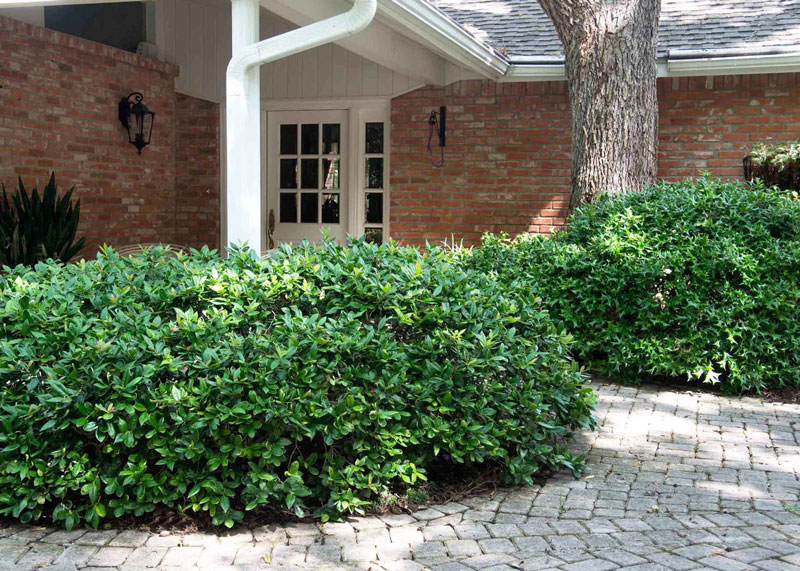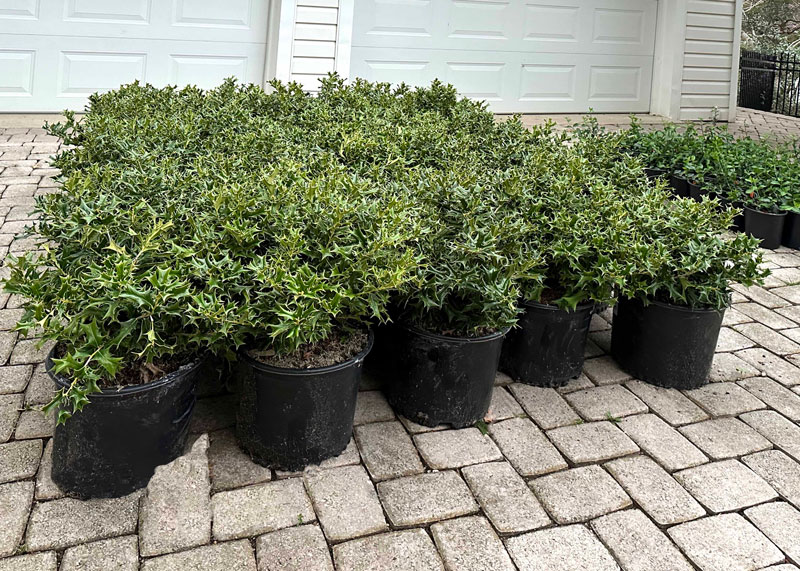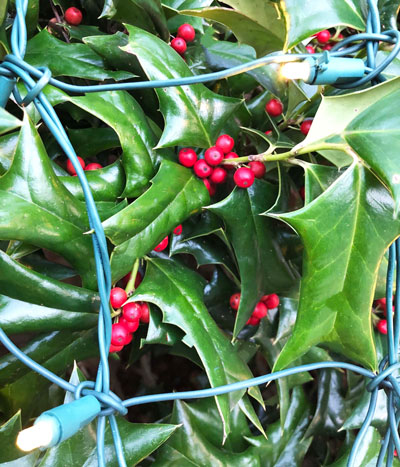Dwarf Chinese holly – one of my old “go-to’s”
When I need a plant that will hold up to heat and cold, sun or shade, and a wide variety of soil types to boot, odds are I’m going to choose a holly.
If I lived in East Texas, I’d be able to choose just about any holly that tickled my fancy. However, where I live in the Dallas/Fort Worth Metroplex, our soils are quite alkaline and the water is even worse. That rules out most hybrids from Ilex opaca (American holly) and Ilex crenata (Japanese holly). I’ve learned from a lifetime of sad experiences that those many types just won’t do well for me.

My heroes are from Ilex cornuta, Chinese horned holly and all of its children and step-children, sisters and half-sisters. Cultivars with I. cornuta in their gene pool include Burford and dwarf Burford, Carissa, Nellie R. Stevens, and Willowleaf hollies and a boatload of others.

Oh, yes. Add in our star for today. Dwarf Chinese holly.
This was a popular plant back in the 70s and 80s when I started developing our landscape. You’d find them in most nurseries, and I included them in my lists of plant recommendations. It’s interchangeable with Carissa hollies, Indian hawthorns, dwarf pittosporums, dwarf barberries, and other low, spreading shrubs. Except, it happens to be better.
However, because dwarf Chinese holly leaves are very prickly, people started shying away from them. Now, it’s much harder to find them. I find that curious, because nobody complained much about spines when they asked for agaves, roses, barberries, yuccas, or, to a degree, many of the bristly-needled junipers. I have dwarf Chinese hollies alongside our front walk. They’ve been there 47 years, and no one has ever complained about being hurt walking past them. People don’t walk through your shrubs – or, if they do, they shouldn’t.
Facts to know…
Common name: Dwarf Chinese holly
Scientific name: Ilex cornuta ‘Rotunda’
Native home: China and Korea
Cultivar history: Seedling selected by E.L. McIlhenny in the mid-1930s and presented to the U.S. Plant Introduction Station for distribution.
Mature size of the dwarf cultivar: 3 to 4 ft. tall and 4 to 5 ft. wide if not sheared. Can be kept somewhat more compact with infrequent trimming.
USDA Hardiness Zones: 7-9
Lighting preference: Sun or shade, but plants will be more compact and fuller in sun.
Soil preferences: Slightly acidic but tolerates alkaline. Does best if planted with ample amounts of organic matter.
Moisture preferences: Uniformly moist. Do not allow plants to become dry. They can reach the “permanent wilting point” (the point beyond which they cannot be saved) without notable symptoms.
Pest problems: Scale insects may attack, but they can be slowed with horticultural oil sprays or stopped with systemic insecticides.

Note: While many initially thought this was a sterile “fruitless” selection, as plants reach 25 to 30 years of age, they frequently began to bear bright red winter berries. That happened in the Sperry landscape, much to my surprise I will add.
